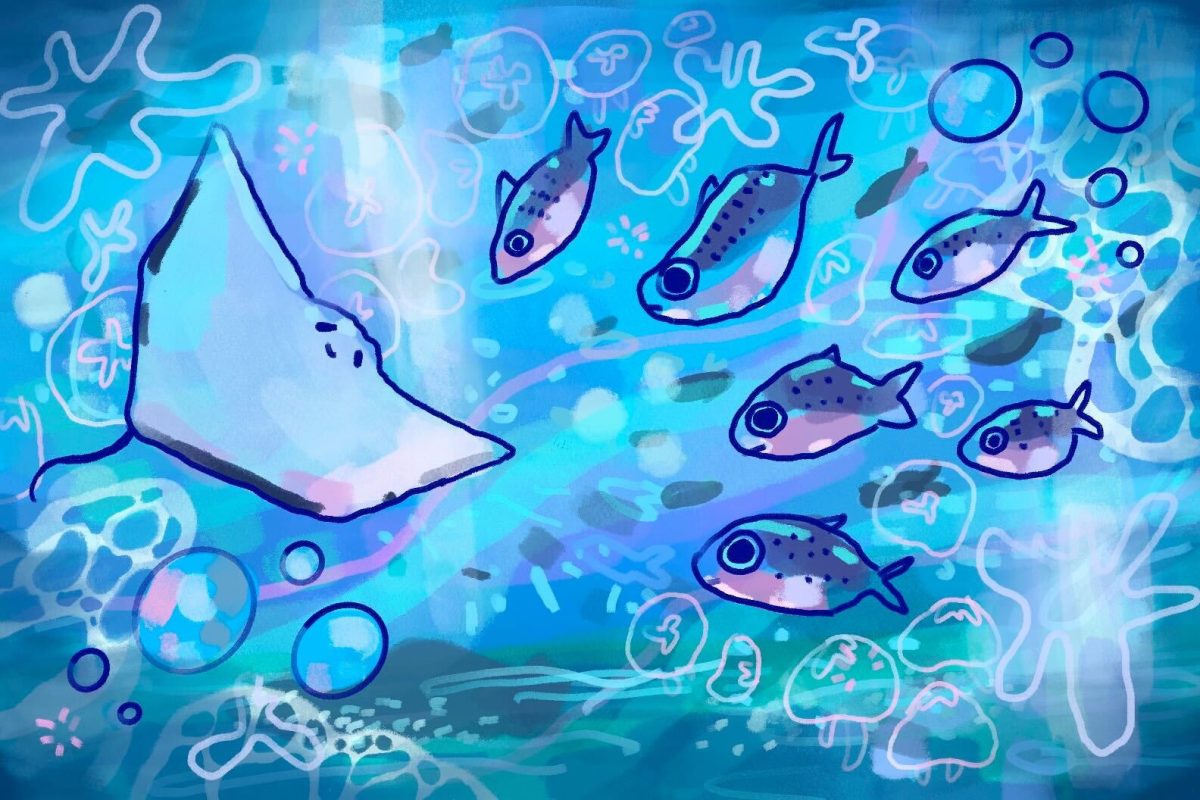Beneath the sparkling blue waves of the Pacific lies a hidden world teeming with biodiversity, wonder, and weirdness. At Birch Aquarium at Scripps Institution of Oceanography at UC San Diego, visitors can experience that world firsthand. Its newest exhibition “Living Seas” will open on May 22, featuring immersive displays and interactive experiences designed to highlight the biodiversity of Pacific Ocean habitats and conservation research being conducted at the SIO.
In progress since August 2024, “Living Seas” will be the aquarium’s largest renovation since 1992. Birch Aquarium partnered with local scientists to implement emerging research into its new habitats and to spotlight some of the stories that inspire them. The exhibit has many interactive features and charts a course through the Pacific Ocean’s varied underwater ecosystems.
New additions include a revamped giant Pacific octopus habitat more than three times its previous size, an upgraded Open Ocean habitat for the aquarium’s beloved loggerhead sea turtle, an immersive Scripps Pier experience spotlighting recent marine research, and a vibrant Tropical Coral habitat complete with mangrove tree roots “growing” from its walls.
Beginning early July, Birch Aquarium’s new extended summer hours will also allow visitors to see the aquarium in a whole new light after dark. UV-responsive wallpaper, digital signage, and projections will seamlessly emulate the shift from day to night in the ocean, revealing the magical underwater world that comes to life after the sun goes down.
“The ocean is so interesting after dark,” Director of Exhibits Megan Dickerson said. “We, as humans, think that once it gets dark there’s nothing to see, but it’s one of the most interesting times in the ocean. We really want to give that feeling of day to night in the aquarium.”
“Living Seas’” aquatic adventure begins in the cool, deep waters of the Pacific Northwest, where a giant Pacific octopus stretches its 13-foot tentacles across an expanded habitat. Red lighting and large rocky crevices foster a secure, enriching environment for one of the ocean’s most intelligent creatures.
“Animal care is key to what we’re doing,” Dickerson said. “[The rock formation] is a place where [the octopus] can nestle in and feel safe, where we can also see them at the same time. It’s always about balancing out the needs of the humans in our habitat and then the octopus or sea star in their habitat.”
Also new to the Pacific Northwest gallery is the expanded Open Ocean habitat, which highlights the vastness of the sea with schooling fish and a striking blue “infinity” effect inside the tank. It will also house one of the aquarium’s most beloved residents: the loggerhead sea turtle. Rescued in 2014, the turtle now lives with a custom prosthetic — designed by Birch Aquarium in collaboration with UCSD hospitals — to support a previous shell injury.
“Our loggerhead sea turtle’s story shows how innovation, collaboration and compassion can give injured sea turtles a second chance — and inspire us to protect marine life,” Birch Aquarium museum educator Gabrielle Mousseau said.
The exhibition then leads guests to California’s coastal seascapes, immersing them in a new Scripps Pier habitat that recreates the experience of standing underwater beneath the iconic pier. The exhibit displays marine life clinging to the pilings while also highlighting research from the SIO, including a live feed from the Coastal Ocean Observing Lab’s Scripps Pier Live Cam. Guests will also encounter a smaller habitat spotlighting crystal jellyfish and the research of Nobel laureate Roger Tsien – a biochemist at UCSD who discovered green fluorescent protein by studying these crystal jellies.
“I like to think of Birch Aquarium not just as the outreach center for Scripps Oceanography but actually a laboratory,” Dickerson said. “The conversations that our people are having around the research, around the animals, I think can take us in a new direction. We’re at this moment of great change, and it can’t just be only the scientists who are doing this work. It needs people from every aspect of society.”
Visitors will conclude their deep-sea odyssey in “Living Seas” by cruising through the enchanting reefs and lush mangroves of the Tropical Pacific where hunting archerfish, emerald skinks, and colorful corals await. In keeping with the exhibit’s immersive theme, the Tropical Coral habitat invites guests to step inside the reef itself, with built-in viewing alcoves and hydrophones that let them hear the real sounds of the coral reef ecosystem. Known for its coral conservation research, the SIO worked closely with Birch Aquarium on “Living Seas” to showcase a diverse array of coral, including a species entirely new to the aquarium.
“Living Seas” is an immersive and educational experience that spotlights some of the amazing animals and cutting-edge research found just down the hill from UCSD’s main campus. The renovation seeks to inform and inspire the public to connect with nature and help protect the ocean.
“There are moments [at the aquarium] where you’re face to face with an animal that you would otherwise never see,” Dickerson said. “That’s what we do here, at the core of it — is show you things you can love [and] create spaces where people can just be with animals and be with each other.”










